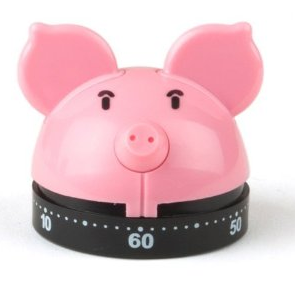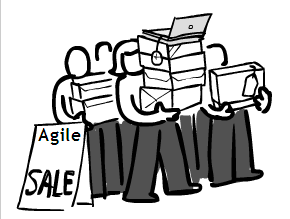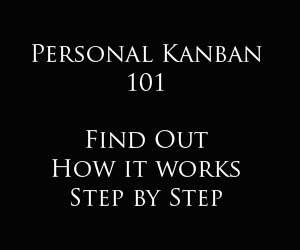 I have a dirty little secret. I have an on-again off-again love affair with the Pomodoro technique. Though I deal with a wicked case of ADD, I seem to keep it in check, thanks in part to my Personal Kanban. The other method I use, though I admit not as commonly, is a pomodoro timer. When things get really bad, I break out the timer. And ya know, things get back on track! You'd think I would learn.
If you find yourself reading this blog, you'll find that I'm a proponent of using simple techniques to get things done. If you're looking for me to do a deep dive on policy, process, and procedure, you're in the wrong place.
I have a dirty little secret. I have an on-again off-again love affair with the Pomodoro technique. Though I deal with a wicked case of ADD, I seem to keep it in check, thanks in part to my Personal Kanban. The other method I use, though I admit not as commonly, is a pomodoro timer. When things get really bad, I break out the timer. And ya know, things get back on track! You'd think I would learn.
If you find yourself reading this blog, you'll find that I'm a proponent of using simple techniques to get things done. If you're looking for me to do a deep dive on policy, process, and procedure, you're in the wrong place.
So, how do I get some of my work done? [1] I limit my work in progress (WIP) and [2] I limit my time (timebox). When I do both, I tend to stay focused and deliver more. The pomodoro technique, like other techniques I like, is pretty darned simple.
So, let's talk about my Piggy Pomodoro!
- Choose a task to be accomplished
- Set the Pomodoro to 25 minutes (the Pomodoro is the timer)
- Work on the task until the Pomodoro rings, annotate the task you were working on
- Take a short break (I take 5 minutes)
- Every 4 Pomodoros take a longer break (I take 10 minutes)
As part of this process, I'm moving tasks on my Kanban from Backlog to Work in Progress. If I take a break, I move it to Blocked. When I return, I move it back to Work in Progress. This allows me to visualize what I'm working on and know what I was working on before my break.
Have a Kanban or Pomodoro story? I would love to hear it.
Why do I use a Piggy, you ask? Because tomatoes give me gas and Chickens would just be wrong.
Image: Amazon


 I have 3x5's in my pockets, in my desk, on my desk...
I have 3x5's in my pockets, in my desk, on my desk... The white board at my desk is used as my personal kanban.
The white board at my desk is used as my personal kanban. I opted for the piggy timer because I have skin in the game
I opted for the piggy timer because I have skin in the game I love my post-it notes!
I love my post-it notes! You can never have enough coffee or Mountain Dew around the office
You can never have enough coffee or Mountain Dew around the office If you work in an open workspace, you need this
If you work in an open workspace, you need this



